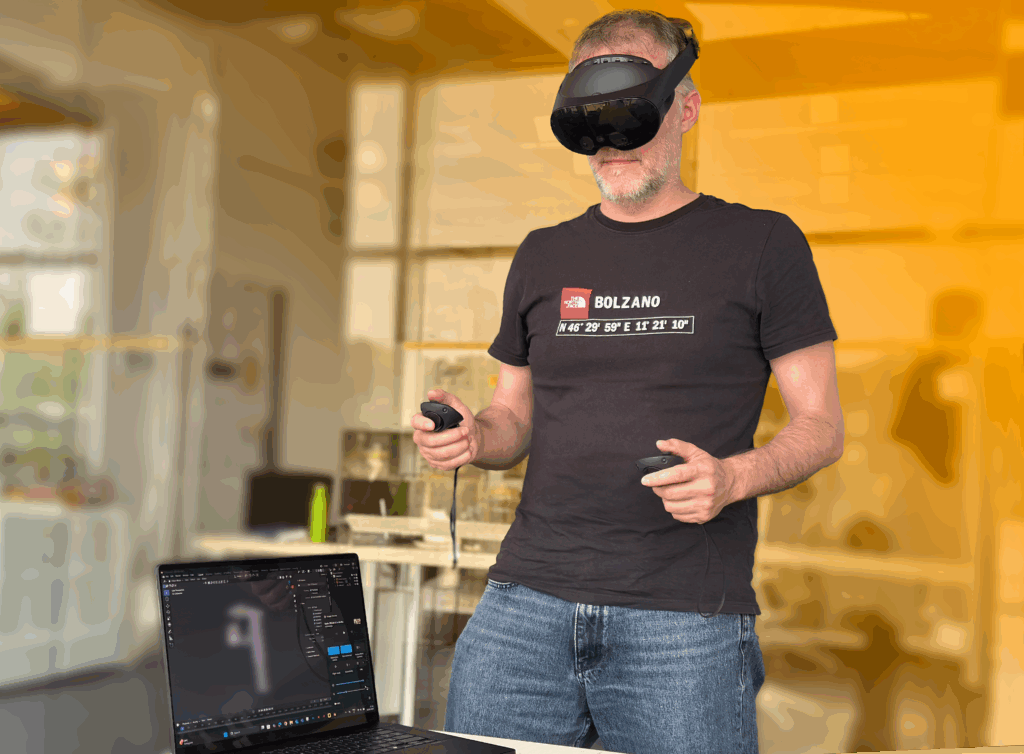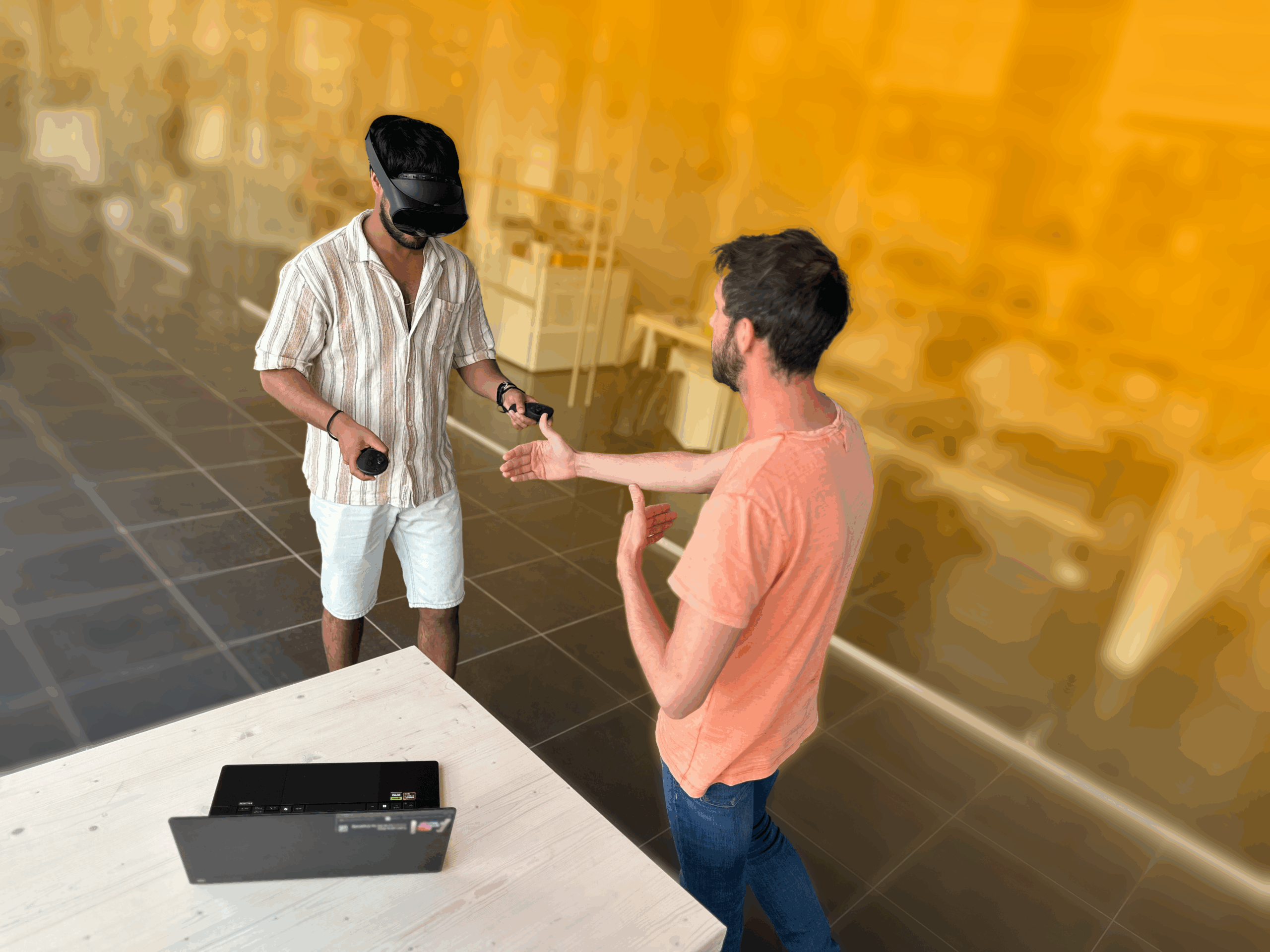How Virtual Reality Is Revolutionizing Medical Design Experience
In medical device design, every detail matters: ergonomics and usability are the primary objectives, as are aesthetics and regulatory compliance.
To ensure proper attention to every aspect, Creanova has chosen to integrate Virtual Reality (VR) into its creative process.
This isn’t just about technology, but a paradigm shift that has improved internal efficiency and brings tangible value to our customers.
What is Virtual Reality and Why is it Important in Medical Industrial Design
But let’s take a step back and define Virtual Reality technology for those less familiar with it.
We’re talking about an immersive technology that allows the exploration of full-scale three-dimensional environments and objects, as if they were real.
The use of traditional 3D models has been revolutionary, but they have the limitation of being displayed on a screen.
This translates into difficulty perceiving and reading the object’s three-dimensionality, proportions, and actual dimensions.
VR offers the ability to provide complete spatial perception: it’s possible to walk around a product, interact with it, and evaluate its dimensions and proportions.
In the development of medical devices, this means being able to test ergonomics, accessibility, and user flows in realistic environments, even before producing a physical prototype, thanks to dedicated software.
VR also differs from Augmented Reality (AR), which superimposes digital elements onto the real world using tablets. VR is ideal for the use of dedicated viewers and has the potential for total immersion, making it much more effective and a powerful ally for overcoming the limitations of two-dimensional visualization alone.

How Creanova Integrates VR into Medical Device Design Process
At Creanova, we have already strategically integrated VR into our design process, and it has quickly become a key tool, especially for the concept validation phase.
During the CAD modeling phase, we import models into dedicated VR environments to anticipate ergonomics, proportions, and aesthetics. Adding verification loops during the design process allows us to identify critical issues that are impossible to perceive on a 2D screen.
The advantage of incorporating VR into the review phases?
- Improved product perception
- Reduced iteration cycles
- Fewer physical prototypes
- Faster and more effective decisions
Therefore, a fluid workflow is achieved with tangible benefits in terms of time, costs, and quality.
For complex and often bulky devices like some medical devices, where ergonomics and usability are crucial, the ability to test in an immersive way is a real game-changer for us.
Virtual Reality: Concrete Benefits for Creanova Clients
For our clients, Virtual Reality represents a powerful and effective communication channel.
For concept presentations, VR can bring the product to life before it actually exists.
This allows you to explore every angle, evaluate spaces, dimensions, and proportions in a simulated yet realistic context. VR headsets are particularly useful, especially for complex, modular, and large devices.
They allow the customer to understand:
- Component layout
- Screen accessibility or tilt
- Volumes and proportions
- Aesthetics and details
Engaging the customer in an immersive experience has enormous power:
- Reduces misunderstandings
- Promotes immediate feedback
The benefit is greater awareness, faster approvals, and fewer iterations, all of which greatly benefit more efficient resource management.
In a sector where time-to-market is crucial, the use of VR and its benefits becomes a strategic asset for our partners, increasing their competitiveness and success.

Case Study: Mecmedix, How VR Made the Difference
Three years ago, we began an exciting journey with our longtime partner, Mecmedix.
At that time, we were working on a modified version of an existing product.
While configuring the heights of the handles, accessories, and screen, we ran into several challenges. Using traditional methods, we need a lot of time and resources on iterative study loops and mockups.
This sparked an internal reflection: we needed a more effective way to optimize resources and avoid team and client frustration.
So, we decided to adopt this augmented reality technology and began integrating it into the process.
In fact, for the new Mecmedix project, a completely new medical cart, we took a fresh approach, using Virtual Reality from the very beginning.
Using the headset, we simulated the proportions and volumes of all the elements: screen, modules, handle, accessory shelf, and more, in a fully immersive way.
During the presentation, we identified a critical issue related to the overall height of the cart, which was determined by a series of initial requirements.
Thanks to the virtual experience, the client immediately understood the problem, and we quickly agreed to revise the concept.
By addressing this early, we were able to intervene before milling a mockup, reducing costs and time, increasing efficiency, and gaining the client’s trust.
VR and the medical industry, a tool for better innovation
For our design team, Virtual Reality isn’t just a technological innovation or a fad: it’s an advanced design tool.
It allows us to validate the project in advance and offer clients a clear and realistic understanding.
The benefits? Improved design, reduced costs, fewer iterations, and optimized time-to-market.
But above all, an immersive experience allows the client to gain greater awareness and engagement.
Want to discover how VR can improve your next medical project?
Contact us and let’s start a smarter, more effective, and more innovative journey together.
Written by
Davide Quagliani
Senior Industrial Designer

